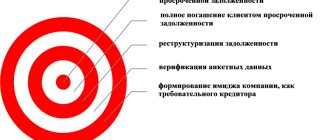On what basis is inventory carried out?
Let's start with the fact that for many people, the concepts of shortages and inventory are inextricably associated with trade. This is a fundamentally incorrect judgment. Inventory is necessary at any enterprise, regardless of the area of activity, including budgetary organizations .
In essence, an inventory is carried out to identify excesses or shortages of inventory items listed on the organization’s balance sheet. This may include goods, cash, furniture and even accounting documentation. According to the method of conducting, inventory can be planned or unscheduled. In the first case, this procedure is regulated by the regulatory documents of the enterprise. The frequency of inspection is set by the manager, depending on the turnover and specifics of the activity.
Emergency incidents may serve as grounds for an unscheduled inventory. For example:
- Suspicion of theft of goods;
- Fire in the warehouse;
- Sale of the enterprise.
In addition, the availability of inventory items can be checked when the person responsible for storage changes.
Inventory procedure
Inventory can be planned or unplanned. Planned inventory is carried out according to the schedule approved in each organization. An unscheduled appointment is assigned if there are significant reasons for this:
- transfer of cases by a financially responsible person;
- theft, a natural disaster during which a warehouse, store or any other storage facility is damaged;
- identification of any facts that may cast doubt on the reliability of the financially responsible person.
It is necessary to issue an order in advance for the upcoming inventory, which clearly indicates the start and end dates, responsible persons and the reason.
Based on the results, a report is drawn up indicating the information received. Depending on this, further orders are issued (on collecting the deficiency, on issuing a reprimand).
What is called a shortage?
24114899
This definition hides the shortage of something previously put on the balance sheet of the enterprise and taken into account in the accounting documentation. This applies to funds, goods and materials in safekeeping. The amount of the shortfall is usually deducted from the salary of the person responsible or the culprit.
Here it is necessary to clarify that the shortfall also includes the profit lost by the enterprise. For example, if a product cannot be sold due to its breakdown. This may include the expiration of the shelf life, when products have to be sold at reduced prices. In this case, the shortage will be considered the difference between the actual and estimated cost.
What is this shortage?
For many accountants, the term “shortfall” is a scary one. This is understandable, since this entails a number of negative consequences, penalties and penalties. In fact, almost always, even if the shortage is insignificant, it will be identified during the inventory process.
The shortage itself is a lack of funds, goods, and materials. In this case, absolutely all valuables must first be put on the balance sheet (included in accounting) in order to be able to strictly take into account their quantity.
The key is also to indicate their material value. The implication is that a person must know why a particular value has been withheld from him. By the way, the most interesting thing is the assessment of the cost of goods in stores.
If a certain amount of products is missing, then the person has the right to withhold the price that is stated according to the documents as retail.
The reason is that this amount is a loss for the store (lost profits are also taken into account). That is, it is not the purchase cost of the product that is taken into account.
Not always the shortage refers only to the value of the missing goods that were missing. If the product was broken or its shelf life had expired, then it is virtually impossible to sell it, so formally many attribute the cost also to the shortage. If, due to damage, the goods had to be sold at a reduced price, then the difference between the expected price and the income received is considered a shortage.
What could cause the shortage?
Here are the following factors:
- Re-grading. For example, the store sells Krasnodar and Dutch apples. They are similar in appearance, but differ in cost. If Krasnodar products are mistakenly sold instead of Dutch fruits, there will be a shortage.
- Production costs. This may include the fact that some goods may fall apart during the sales process, which will also lead to shortages.
- Insurmountable circumstances. For example, as a result of a flood, warehouses were flooded and some of the products became unusable.
- Theft. This is the fault of employees who, using their official position, appropriate funds or goods from the company.
Read also: Employee personal card form T-2
Common reasons for shortages
What causes a big shortage in the store? It would be advisable to consider a list of reasons that lead directly to errors in accounting for products sold, affecting profits and, as a consequence, the appropriateness of such an unpleasant situation:
- Significant reduction in the price of the product being sold. This can happen if the employer has not debugged the mechanism for creating the final cost of the product. This practice is often observed when a discount system is actively used at a particular outlet. So, when deciding on such an option to increase sales during the audit process, it is imperative to take into account the difference between the original and discounted costs of all units of production.
- Low level of attentiveness of cashiers to the contents of baskets and carts. The fact is that buyers, as a rule, prefer to place the heaviest bags at the bottom of the baskets. Accordingly, this requires employees to be extremely careful in the process of charging the cost of goods, as well as quantitative verification.
How is a shortage investigated?
The inventory assets of an enterprise are never ownerless, and a specific person from among the employees is responsible for them.
If a shortage is identified, an explanatory note is taken from such an employee, which sets out in detail the reasons for what happened. Such a note is drawn up in free form, but is always certified by the signature of the person guilty or suspected of the shortage. The employee is obliged to explain the reasons for the shortage within 2 days from the moment such a demand is presented to him. The degree of guilt of the employee is determined by the head of the enterprise. He also has the right to apply legal sanctions to those responsible. For example, to recover the amount of damages or to fire an unscrupulous employee. If we are talking about dismissal, the culprit must be familiarized with the relevant order within three days.
How to document a violation?
The violation discussed in the article is documented in accordance with the following steps:
- Conducting an audit at the initiative of the employer, the results of which are recorded through special acts.
- Drawing up an explanatory note from the employee who made the shortage. By the way, in this case, the employer often collects memos from other employees.
- A written request from the manager for compensation for losses, sent directly to the employee.
- Drawing up a separate act if the employee refuses to compensate for losses. By the way, at this stage the employer has the right to file a claim in court.
- Submission to the judicial authorities of a correctly executed act that records the results of the audit, as well as accounting documentation indicating the original cost of the goods. Moreover, correspondence with the employee (a written request for compensation for the detected deficiency) is usually submitted to the court.
- Compulsory collection of an employee's monthly salary. This operation is carried out through an order from the manager or by order of the judicial authorities. It is important to note that the document is published no later than a month from the date of the audit (inventory).
Registration of identified shortages
When registering a shortage, its reasons are always taken into account. In particular, losses may be caused as a result of the fault of third parties or unforeseen circumstances. The fact of production costs is also taken into account. Separate types of accounting entries apply to each situation.
Natural loss
Let's say that a store sells flour. During packaging, some of the goods fall apart, which is written off as production costs. Let’s assume that during the reporting period, the shortage amounted to 2,000 rubles, excluding the trade margin of 500 rubles.
The accounting entry will be as follows:
- Debit 94/Credit 41 - 1,500 amount of deficiency;
- Debit 94/Credit 42 - 5 00 the size of the trade margin for unavailable products;
- Debit 44/Credit 94 - 1,500 cost of shortage within production costs.
Unseen circumstances
Let’s assume that a concrete mixer worth 15,000 rubles burned down at a construction company. Accrued depreciation amounted to 2,500 rubles, the culprits of the fire have not been identified.
This is shown in the reporting documentation as follows:
- Debit 94/Credit 01 - 15,000 initial cost of equipment;
- Debit 02/Credit 01 - 2,500 accrued depreciation;
- Debit 91-2/Credit 94 - 15,000 amount of deficiency.
Theft has been committed
For example, taking advantage of her official position, a store cashier embezzled 12,500 rubles. The fault has been established, the shortage will be deducted from the cashier’s salary in equal installments of 1,250 rubles per month.
It will appear in the accounting entry as follows:
- Debit 70/Credit 73 - 1,250 deduction from salary.
Is it possible to write off the shortage?
The law provides for this possibility.
For example, a customer in a store accidentally dropped two bottles of expensive alcohol from the display case. This entails a shortage, but it will not be possible to recover losses from the buyer. Here, the store employee who was engaged in displaying the goods may be considered guilty. However, for each type of product there are certain standards, which are called distribution costs. If the amount of the shortfall does not exceed the established norms, it can be written off without any legal consequences. If, in the case of broken alcohol, distribution costs include the loss of 3 bottles, the shortage can be written off. However, this fact remains at the discretion of the manager.
Withholding the shortfall from the perpetrators
Typically, financial responsibility is negotiated during employment.
For example, a storekeeper will be fully responsible for the products in his warehouse. Department seller - for goods under his control. If a shortage is identified, losses are recovered from the salary of the responsible person. Here it is necessary to clarify that for shortages on particularly large scales, criminal prosecution is possible. However, this punishment does not exempt the culprit from compensation for losses caused. Read also: Tax on professional income
Please note that financial liability can be personal or collective. The second option is often used in stores and supermarkets. For example, if a shortage is identified in the sausage department, the amount of the shortage will be covered by all employees who work here.
The amount is usually distributed in equal shares, regardless of whose shift the shortage occurred.
Features of collection
It should be borne in mind that responsibility from sellers is not relieved even if
if they did not sign a full liability agreement. But at the same time, the employer must prove violations on the part of the employee.
If the fact of loss of goods is identified and confirmed by documents, the dispute between the employer and employee can be resolved on a voluntary basis. But the employee’s refusal to compensate for losses leads to the employer’s appeal to the courts.
Documentation of a violation includes the following steps:
- An audit is carried out at the initiative of the manager. Its results are recorded in special acts.
- The employee who made the shortage is asked for an explanatory note. Additionally, the employer can collect reports from other employees.
- The manager asks the employee in writing to compensate for the loss caused to the store.
- If the employee refuses to do this, a separate act is drawn up. At this stage, the employer has the right to file a claim in court.
- For consideration in court, it is important to submit a well-drafted act documenting the results of the audit (inventory), as well as accounting documents indicating the primary cost of goods. In addition, correspondence with the employee (a letter requesting compensation for the detected deficiency) is submitted to the court.
- Forced collection of the monthly salary is carried out in accordance with the order of management or in accordance with a court ruling. The order is issued no later than one month from the date of the audit.
How to get sick leave at the clinic - find out detailed information from us! If you were sent on a business trip on a day off, then you will read useful information on this issue in our article. Working pensioners will find our detailed material useful.
How to properly contain shortages
If the loss does not fit into the distribution cost norms, it cannot be written off. In this case, deduction from the salary of the guilty or responsible person is applied. To ensure that everything happens within the framework of the law, the following rules are observed:
- A matching statement is prepared and a report on the fact of shortage is drawn up;
- The employee is given a written notice indicating for what and in what amount the deduction will be made from him;
- The form of compensation for losses is established: a one-time deduction or equal amounts, but not more than 20% of the total amount that the employee receives in hand.
Here it is necessary to clarify that recovery of damages is possible after the dismissal of the employee responsible for the shortage. However, such a procedure is performed only in court, and the employer will have to prove the employee’s guilt.
Shortage of goods
Category: How to deceive, cheat, cheat, steal, rob
Before solving the problem of losses, it is necessary to carefully study it and try to quantify it. This opportunity is provided to us by calculating the shortage of goods.
Shortage is the difference between the value of an item you should have according to your books and the value you actually have. There are two methods for calculating shortages of goods - the method of estimating at retail cost and calculating at the cost of purchase. In either case, the shortage of goods is usually expressed in monetary units.
1. Method of calculating shortages at retail value
To calculate the cost of a product using this method, it is necessary to add its retail value to the purchase price of the product available at the beginning of the period, and then subtract the revenue received from its sale. This way you get an “accounting” figure. Subtracting from it the cost of the goods in stock, we get a shortage.
For subsequent financial calculations, it should be converted into the purchase price, that is, into a cost indicator (see example No. 1). This is done by multiplying the retail price by the cost factor. (The cost factor shows what percentage of the retail price the purchase price is. It can be determined by dividing the purchase price by the sale price.)
After all the buying and selling for the year, we should have had $150,000 worth of inventory left, but the inventory showed that we actually had $125,000 worth of inventory left. It turns out that part of the goods worth $25,000 mysteriously disappeared! The cost of existing goods is carried forward to the beginning of the next year.
In the next period, the cost structure of the calculation changes. The store decides to charge a 60% markup instead of 50%. Thus, we obtain a cost coefficient equal to 62.91 instead of 66.67% in the first year.
Shortages are usually expressed as a percentage of sales. In the first year, the $25,000 inventory shortage was 2.38% of $1,050,000 (sales revenue). In the second year, despite the fact that in absolute terms it increased (from 25 to 26 thousand dollars), in relative terms it decreased to 2.31%, which is explained by an increase in sales volume.
2. Method for calculating shortages at cost
When calculating the shortage of goods at its cost, the same approach is used as in the previous case. The only difference is that here the purchase price of the product is used for calculations rather than the retail price. This method is often used in stores where all transactions are recorded using special identifier numbers for each type of product. With their help, the quantity of available goods of a certain name is calculated.
Example No. 2 shows the use of the cost method to calculate shortages (initial data taken from the previous example).
In this case, the shortfall is 2% of $1,050,000 (sales revenue). Thus, the share of product shortages in store B, calculated using the cost method, is significantly lower than in store A (2.38%), where we determined it by retail cost. It turns out that store B performs better? However, remember that store A has a cost ratio of 66.67%. Using it to calculate the retail price of the missing product, we obtain a shortage share of 1.59% (2.38 x 66.67%). If we compare this figure with that in store B (2%), it turns out that store A has a smaller shortage.
It is necessary to understand the above calculations in order to understand the reasons for the shortage and make comparisons. If you know all the data necessary for the calculation, you will be able to determine what impact a particular event or transaction has on the increase in shortages, and compare your indicators with similar data from competitors and the industry as a whole.
Example #1
Calculation of product shortages using the retail cost method
Cost of shortage of goods
A missing product for a store costs more than it would cost if it were on the shelf, since there is also lost profit from the loss of the product. If we assume that the store makes a 5% profit, then for every dollar of stolen goods, it will have to sell an additional $20 of something just to compensate for the costs.
Example No. 2
Calculation of shortage of goods using the cost method
It is known that costs can be both fixed and variable, but for the sake of simplicity in demonstrating lost profits, we will consider all costs to be variable.
Let's say an item worth $10 is stolen from a store. In order to return these 10 dollars, you need to sell 200 dollars worth of goods (see example No. 3).
Example No. 3
A store with annual sales of $500,000 and a 2% shortfall loses $10,000 in a year. In order for a store to have a 5% profit, sales would have to increase by $200,000, or 40%! It's much easier to cut losses, isn't it?
With Worksheet #1, you can calculate your store's inventory shortages and the additional sales needed to cover lost profits.
Worksheet #1
Calculation of product shortages in the store
If you used the method of calculating shortages at cost, then you need to convert the balance of goods calculated at cost into the retail price using a cost coefficient.
Net profit percentage is the share of store profit in total sales after covering all costs (salaries, rent, etc.).
Low prices as a reason for shortages of goods
1. General information
Underpricing is one of the main reasons for shortages of goods, especially in cases where pricing control is not properly worked out. Most stores use the retail cost method to calculate the cost of an item. If you have adopted a similar practice, then when making calculations, do not forget to take into account all changes in prices for goods.
An example has already been given to illustrate the occurrence of shortages. Let's look at it again and assume that:
• retail sales at full price were $975,000;
• retail sales volume with a 25% discount is $100,000;
• In total, goods sold amounted to $1,075,000.
So sales were $1,075,000, but the cash register records only show $1,050,000. Where did the $25,000 go?
When the price at which an item is sold is reduced, the difference between the original price and the discounted price must be taken into account. This is called underpricing.
In the same example, we calculated that the shortfall in the example given was $25,000. It seems that the goods for the specified amount have mysteriously disappeared, but is this really so? An error occurred - the underpricing was not taken into account - and the store suffered heavy losses. Of course, an incorrect calculation of the volume of retail sales of an item can affect the amount of the shortage only if you use the method of estimating sales at retail value. Now, when many stores have sophisticated equipment for recording the receipt and sale of goods, all calculations are made by assigning an individual number to each group of goods, that is, by estimating sales at cost. It should be noted that when using the method of calculating sales volume based on the purchase price of goods, in calculating the cost of existing goods, similar errors are often made in accounting reports.
2. Precautions
Record all price changes (Report on price increases and decreases, form No. 12) and recalculate the cost of the goods accordingly.
Causes of shortages (errors)
Trolleys for goods
1. General information
Sometimes cashiers forget to look at the very bottom of the cart, where shoppers usually place their heaviest items. Vertically positioned bags in a fully loaded cart can hide items behind them.
2. Precautions
a) Check all hard-to-see places in customers' carts.
b) Check the quantity of goods sold.
Using the product inside the store
1. General information
Sometimes store personnel take goods from the warehouse for their own needs. Before this practice begins to cause losses, accounting and control should be established. Writing off an item in a store does not bring profit, but knowing what happened to that item can bring some benefit. If the item has not been written off, it will be included in the shortage at the end of the year. This may lead the store owner to believe that things are worse than they really are, and additional unplanned funds will be spent to reduce losses. But if the goods are written off, for example, for internal business needs, the store owner will know their value (which is important). In addition, he will not rack his brains over the cause of the shortages.
2. Precautions
Record all cases of using the product for the needs of the store.
Damaged item
1. General information
As with write-offs, damaged merchandise that is not properly handled can cause additional damages. Although writing off defective goods does not bring any visible profit, it allows you to avoid a number of unnecessary mistakes.
By recording damage, you can identify products with which something constantly happens. If one of your products is found to be defective too often, you should consider whether it is worth purchasing from that supplier in the future. Also think about how selling damaged goods will affect the store's image.
Ask employees about the reasons for damage to goods - maybe this does not happen by accident. There are no exceptions to situations where store employees deliberately spoil an item in order to later buy it at a bargain price. Therefore, only management employees should have the right to sell such goods. It is necessary to keep records of sales of unusable goods to store employees. If any of them consistently have cases of low-quality items, conduct further investigation.
2. Precautions
Register all cases of damage to goods (see Goods write-off form, form No. 13).
Empty packaging
1. General information
If empty packages are found in the store, and the product has disappeared from them, you need to write it off. If possible, you need to keep track of what types of goods go missing most often. This will help to identify goods, so to speak, of “high demand” from thieves, which means you will be able to take appropriate precautions, eliminate or make inaccessible the most dangerous areas of the store in this sense.
2. Precautions
Record all cases of finding empty packaging in the store (see form No. 13).
Calculations of quantity of available goods
1. General information
Very often errors occur when taking inventory of goods. Inventory is an integral part of any store. It is carried out either by directly counting the goods available in the warehouse and on the sales floor, or by calculation, using documents on the receipt and sale of goods. Errors that occur during inventory can affect the store’s performance indicators for a long time - one to two years, and sometimes longer.
For example, at the beginning of the year you have 50 items that cost $10 each. Over the course of a year, the store purchases another 110 of the same items and sells 60. At the end of the reporting period, 100 items remain on the shelves. This is reflected in the inventory records as follows.
If the counting of goods is carried out incorrectly, then the record may, for example, look like this.
Next year, the “Cost of goods at the beginning of the year” indicator will not be 1000 dollars, but 900.
If there are no errors in subsequent calculations of the quantity of goods, then there will be an increase in the quantity of available goods, which will reduce the shortage accumulated over the current year. As a result, you will never know about the problems existing in your store. When using the retail price calculation method, any error in the calculations will lead to an incorrect indication of the quantity of available goods and, as a result, to an increase in shortages. Let's show this with the following example:
Actual condition
Faulty state, fixed
In the first example, accounting calculations showed that the balance of the goods was $750 - there was no shortage. In the second case, the store recorded a shortage of $67 worth of goods, although in fact this was simply an error in the records.
If you use the method of calculating shortages of goods based on their cost, then errors occur in two cases. Firstly, when simply counting goods, a worker may make a mistake and not count all the items on the shelves. This is already leading to shortages. Secondly, even if the calculation is made correctly, an error may be made when recording the product number or its purchase price. If the price accidentally turns out to be too high, the quantity of the product will “increase”. However, this can only be corrected during the next inventory.
Similar problems arise when the information you have is incomplete. If all item receipt data is not properly recorded, you will end up with an incorrect cost for the item on hand.
In retail trade, it is not uncommon for new shipments of goods to be delivered immediately before inventory. If supply control is not well established, a new batch may simply be put somewhere aside and not counted. However, the check for this item was cleared before settlement, so there will be a shortage in the store, and the cost of the available item will be inflated.
Particular attention should be paid to partial deliveries during the inventory count. Often a single invoice is provided for the entire shipment of goods, although the delivery is made in parts and at the moment the goods have not been received in full. The store management should know that the preparation of documentation for such deliveries can only be entrusted to the most experienced employees who perfectly understand the ongoing processes and are aware of the full responsibility for errors in calculations.
2. Precautions
a) Whenever you conduct an inventory, focus on the accuracy of all calculations.
b) All documents drawn up by hand must be completed clearly and legibly.
Sample documents
Inventory order
Inventory order
Inventory report
Inventory report sample
Report of shortage of goods
Report of shortage of goods
How to take into account shortages identified during inventory
The procedure and timing of the inventory is determined by the head of the organization.
However, there are cases when an inventory is required, for example:
- before drawing up annual financial statements (an exception is provided only for property, the inventory of which was carried out no earlier than October 1 of the reporting year);
- when changing financially responsible persons;
- if abuses are revealed, as well as facts of theft or damage to property;
- during reorganization or liquidation of the organization;
- in case of a natural disaster, fire or other emergency situations caused by extreme conditions.
You can conduct an inventory of fixed assets once every three years, and of library collections - once every five years.
Features of shortages during inventory
Let us consider the features of the various circumstances that caused the shortage.
Production costs
The following factors are taken into account:
- Methods of transportation and storage;
- Production technology;
- Climatic and seasonal conditions.
For example, if a company is engaged in the production of concrete, then natural losses of bulk materials are explainable and secured by local regulations. Such standards are reviewed every 5 years.
Re-grading
Offsetting can be used here, and the shortage is written off as natural loss, but only for certain types of products. At the same time, the concept of regrading is not always applied. To do this, it is necessary that the products have similar characteristics, quantity and name, and one person must bear financial responsibility for both types of goods.
Technical losses
This aspect is inextricably linked with production technology and is not regulated at the legislative level. Therefore, acceptable standards are determined by each enterprise individually. It should be clarified that the approved limits should be based on calculations that reflect the characteristics of the transportation of raw materials and production cycles.
Theft
Based on Article 22 of the Labor Code, heads of organizations have the right to hold their employees financially liable. Here, the fact of a shortage is revealed by an inventory, the reasons and culprits are established. All these nuances are documented, and deductions are made from the salaries of those responsible.
If there are no culprits
In such cases, the shortage is associated with the financial result and is reflected in the reporting documentation.
Employee Responsibility
In the event that an act of shortage of goods has been issued, in accordance with Article 243 of the Labor Code of the Russian Federation, absolute financial liability in relation to the employee occurs:
- If such liability was imposed on the employee through the provisions of labor legislation (after all, he occupies a specific position, which is one way or another noted in the law) or a separate collective agreement.
- If the damage was caused not in the course of performing work duties (an excellent example of this type of violation is the use of a company car for personal purposes during non-working hours by a person to whom this vehicle is entrusted in accordance with his official duties).
From the above, we can conclude that only an employee who bears financial responsibility can be held responsible for a shortage of commodity or monetary resources in a store.
Features of tax accounting
Let's look at the identified shortage through the prism of the Tax Code.
Income tax
Based on Article 265 of the Tax Code, the identified shortage is equated to non-operating expenses. If it is necessary to replenish inventories, this is taken into account as expenses in the period when the shortage was identified.
Read also: simplified tax system in 2020










